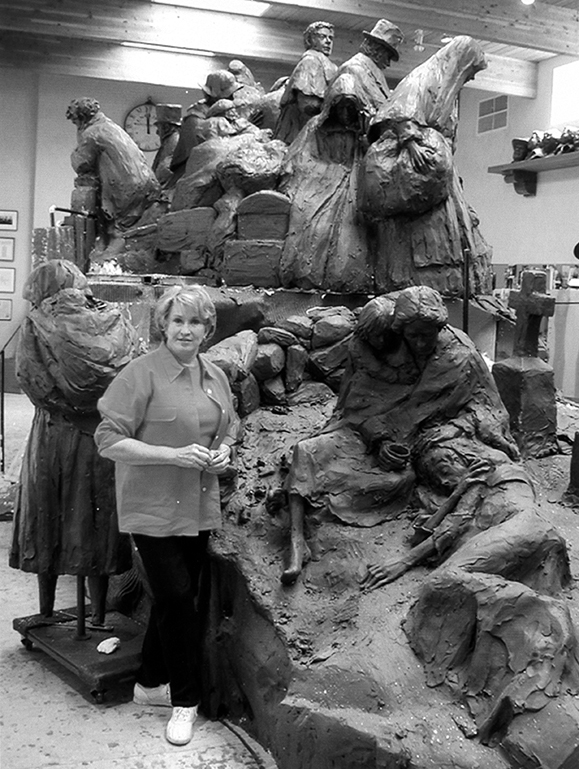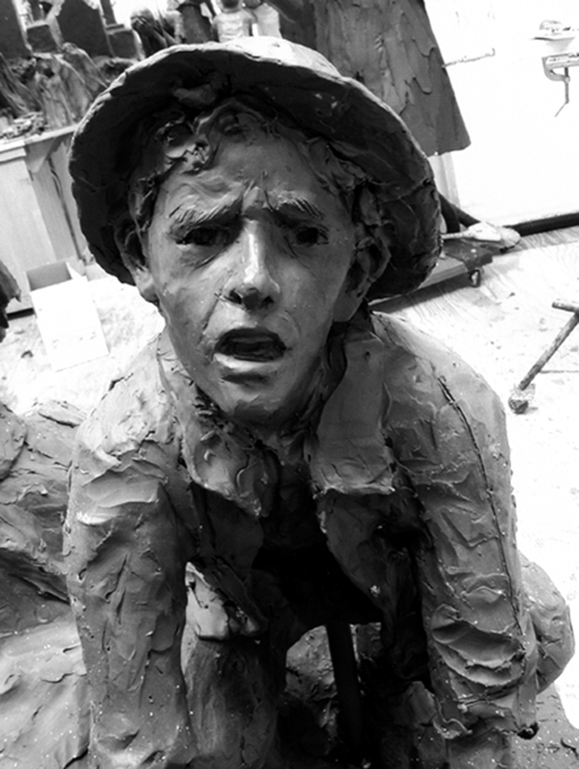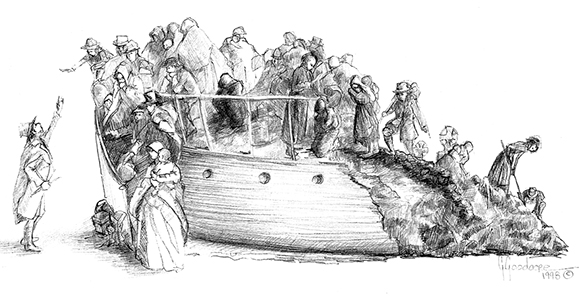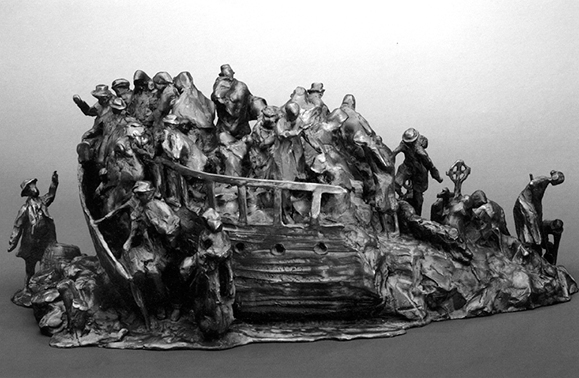The Irish Memorial in Philadelphia is one of many Famine memorials springing up across the United States. But how does one show that the one million dead were once living, breathing, loving, laughing humans? And how does one move from the tragedy to the promise of new life that America offered?
Sculptor Glenna Goodacre is no novice to daunting tasks. Her ability to capture both light and tragic moments so poignantly has made her one of the world’s most renowned sculptors. Most notable is her Vietnam Women’s Memorial in Washington, D.C. In 2000 Goodacre’s rendering of a Shoshone teenager with her infant son was selected to grace the new dollar coin.
The Irish Memorial, which Goodacre devoted herself to for one full year, is now complete in its clay form and awaiting its casting in bronze.
Goodacre, who usually works on three or four sculptures at a time, admits, “It was much more time-consuming than I imagined.” Goodacre, 61, who completed the work in her New Mexico studio, said the largest difficulty with the piece was knowing when a figure was complete. “You never know when to stop on a figure. I want people to look at the emotion in a face.”

Glenna Goodacre with her works in progress. 
Detail of the Irish Memorial.
The artist traveled to Ireland for research and was profoundly moved by the graphic images in the museum at Cobh. She used period paintings from the National Gallery as models for the faces in her work. Back in New Mexico, Goodacre found body models, using a woman “so pathetically thin you could see her bones through her skin.” For authenticity she would “grab any Irish person [she] came across.” Irish actors on tour from London and a soccer player all posed for her.
The wedge-shaped work is approximately 30 feet long, 14 feet wide, and 12 feet high. The sculpture was originally intended to have 25 life-size impressionistic figures in period dress, but the number now stands at 35, some as tall as 6’2″, others small babies. On the east side of the sculpture is the suggestion of a landscape: there stand the Celtic Crosses and there lie the starving. As the viewer’s eyes move west along the sculpture, it begins to rise into a representation of a ship bearing the anguished immigrants. At the west and highest end of the sculpture, moving the scene from one of despair to promise, these immigrants step off the ship and into new lives welcomed by an Irishman already there.

Sketch of Irish Famine Memorial in Philadelphia.
The memorial, which was the inspiration of the late Philadelphia historian Dennis Clark, will be installed in September 2002 within sight of the Philadelphia waterfront. The effort is backed by Irish American organizations intent on raising $2.1 million for the memorial and the 1.75-acre surrounding park. The site will provide an educational walk with stanchions bearing facts on the Famine and the Irish Diaspora in the United States. Also to be inscribed at the memorial site is a poem by Banished Children of Eve author Peter Quinn, entitled “Remembrance.”
Of her sculpture, Goodacre said, “I wanted to make a piece that people will stop and study and remember, [to] learn about this starvation.”
A PBS documentary of Glenna Goodacre’s work will air shortly after the Famine Memorial’s unveiling. ♦


Leave a Reply